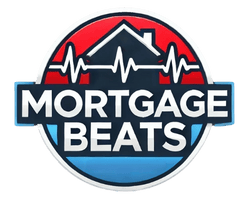Understanding Closing Costs and Their Components
Closing costs represent the various fees and expenses associated with finalizing a mortgage, typically ranging from 2% to 5% of the loan amount. These costs include lender fees like origination charges, appraisal fees, title insurance, and prepaid items such as property taxes and homeowners insurance. Buyers often underestimate these expenses, which can lead to last-minute financial stress if not planned for adequately.
The specific closing costs vary by location, lender, and loan type, making it essential for borrowers to review their Loan Estimate form carefully. Some fees are negotiable, while others are fixed, and understanding this breakdown helps buyers identify where savings might be possible. For those exploring ways to reduce upfront cash outlays, rolling costs into the mortgage can seem appealing, but it’s not always straightforward with conventional loans.
At NorCal Real Estate & Financial Services, we prioritize transparency in explaining these costs to our clients. Our team provides detailed estimates early in the process, empowering buyers to explore all financing options with confidence. Whether you’re a first-time homebuyer or an experienced investor, knowing what to expect at closing prevents surprises and supports smarter financial decisions.
How Conventional Mortgages Typically Handle Closing Costs
Conventional mortgages, backed by Fannie Mae or Freddie Mac, have specific guidelines about closing cost financing. Unlike some government-backed loans, conventional loans generally don’t allow borrowers to directly roll closing costs into the mortgage without affecting the loan terms. However, there are indirect methods to reduce upfront payments, such as lender credits or slightly higher interest rates in exchange for reduced fees.
Lenders assess a borrower’s ability to cover closing costs during the underwriting process. If a buyer lacks sufficient savings, the lender may suggest alternatives like adjusting the loan structure or seeking seller concessions. It’s worth noting that conventional loans require a minimum borrower contribution, usually at least 5% of the purchase price, which can limit flexibility in financing closing costs entirely.
NorCal Real Estate & Financial Services specializes in tailoring conventional loans to meet individual needs. Our advisors help clients navigate these guidelines, identifying strategies to minimize upfront expenses while maintaining favorable loan terms. By understanding lender expectations and loan parameters, buyers can make informed choices about how to structure their mortgage effectively.
Lender Policies on Rolling Closing Costs into the Loan
Each lender has unique policies regarding closing cost financing, which can influence whether rolling fees into the loan is feasible. Some lenders offer “no-closing-cost” mortgages, where fees are absorbed by charging a slightly higher interest rate over the loan’s life. Others may permit limited cost roll-ins if the loan-to-value (LTV) ratio remains within acceptable limits. These variations underscore the importance of shopping around for the best terms.
Lenders also consider the borrower’s creditworthiness when evaluating such requests. Strong credit profiles may qualify for more flexibility, whereas riskier borrowers might face stricter requirements. Additionally, lenders typically cap the amount of closing costs that can be financed, often allowing only specific fees like prepaid taxes or insurance to be included in the loan amount.
Working with an experienced mortgage partner like NorCal Real Estate & Financial Services ensures access to multiple lender options. We connect clients with lenders whose policies align with their financial goals, whether that involves minimizing upfront costs or optimizing long-term savings. Our expertise simplifies the comparison process, helping borrowers secure the most advantageous terms available.
Loan-to-Value Ratio Implications
The loan-to-value (LTV) ratio plays a critical role in determining whether closing costs can be rolled into a conventional mortgage. Lenders typically cap conventional loans at 80% LTV without private mortgage insurance (PMI), or up to 97% LTV with PMI. If rolling in closing costs pushes the LTV beyond these thresholds, borrowers may face higher rates or additional insurance requirements.
For example, a home priced at $300,000 with a $285,000 mortgage (95% LTV) leaves little room to add closing costs without exceeding conforming loan limits. In such cases, lenders might require the borrower to cover fees out of pocket or explore other concessions. Understanding these limits helps buyers set realistic expectations and avoid last-minute financing hurdles.
NorCal Real Estate & Financial Services helps clients calculate LTV ratios and assess their impact on loan options. Our advisors provide clear explanations of how financing closing costs affects overall loan structure, enabling buyers to plan accordingly. By anticipating these constraints early, borrowers can explore alternative solutions without derailing their home purchase timeline.
Interest Rate Trade-Offs for Financing Fees
Opting to roll closing costs into a mortgage often comes with trade-offs, particularly in the form of higher interest rates. Lenders may offset waived upfront fees by increasing the rate, which can significantly raise the total interest paid over the loan’s lifespan. For example, a 0.25% rate increase on a $300,000 loan could add thousands in long-term costs, outweighing the short-term benefit of avoiding upfront payments.
Buyers should weigh these trade-offs carefully, considering both their current cash flow and future financial plans. Those planning to sell or refinance within a few years might benefit from lower upfront costs, while long-term homeowners could pay more overall. Using an amortization calculator to compare scenarios helps quantify these differences and guide decision-making.
At NorCal Real Estate & Financial Services, we emphasize personalized analysis to determine the best approach. Our mortgage experts model different scenarios, showing clients how rate adjustments impact both monthly payments and total loan costs. This data-driven approach ensures borrowers choose strategies aligned with their financial priorities, whether that’s immediate savings or minimizing lifetime interest.
Alternative Ways to Cover Closing Expenses
For borrowers unable or unwilling to roll closing costs into their mortgage, several alternatives exist. Seller concessions, where the seller agrees to pay a portion of the fees, are common in buyer’s markets. Similarly, lender credits—where the lender covers costs in exchange for a higher rate—can provide immediate relief without increasing the loan principal.
Down payment assistance programs and grants may also help eligible buyers cover closing costs, particularly for first-time or low-income purchasers. Another strategy is negotiating with service providers (e.g., title companies) to reduce certain fees. Exploring these options early in the homebuying process expands financial flexibility and may eliminate the need to finance costs altogether.
NorCal Real Estate & Financial Services maintains an extensive network of resources to help clients access these alternatives. From local assistance programs to creative negotiation tactics, our team identifies solutions tailored to each buyer’s unique situation. By presenting a full range of options, we empower clients to make choices that support both their immediate needs and long-term financial health.
Comparing Government Loans to Conventional Options
Government-backed loans (FHA, VA, USDA) often provide more flexibility for financing closing costs compared to conventional mortgages. FHA loans, for instance, allow sellers to contribute up to 6% of the purchase price toward closing costs, while VA loans permit 100% financing, including fees. These programs can be advantageous for buyers with limited savings or lower credit scores.
However, government loans come with their own trade-offs, such as mandatory mortgage insurance premiums or funding fees. Conventional loans, while stricter on closing cost financing, may offer lower long-term costs for borrowers with strong credit. The right choice depends on the buyer’s financial profile, property type, and future plans.
NorCal Real Estate & Financial Services helps clients evaluate all loan types to find the optimal fit. Our advisors compare the nuances of government and conventional programs, ensuring borrowers understand how each option affects their closing costs and overall mortgage terms. This comprehensive analysis is key to making a confident, informed decision.
Pros and Cons of Financing Closing Costs
Financing closing costs offers immediate benefits, particularly for cash-strapped buyers who need to preserve savings for moving expenses or emergencies. It also enables earlier home purchases by reducing upfront financial barriers. However, the long-term drawbacks include higher interest payments and potentially larger monthly mortgage installments, which could strain future budgets.
Another consideration is the opportunity cost of financing fees versus investing that money elsewhere. For example, using spare cash to pay closing costs upfront might free borrowers to invest in home improvements or higher-yield assets. Conversely, preserving liquidity by rolling costs into the loan could provide financial security in uncertain times.
NorCal Real Estate & Financial Services guides clients through these nuanced decisions. We present balanced perspectives on the advantages and disadvantages, helping buyers align their choices with both current circumstances and future aspirations. Our goal is to ensure clients feel confident in their path forward, whether that involves financing costs or pursuing alternative strategies.
When Rolling Costs into Your Mortgage Makes Financial Sense
Certain scenarios make financing closing costs a prudent choice. Buyers who expect significant income growth in the near future may prefer to minimize upfront payments, knowing they can refinance or pay down the loan later. Similarly, those in competitive markets might prioritize liquidity to act quickly on desirable properties, even if it means slightly higher long-term costs.
Investors or short-term homeowners may also benefit, as the additional interest over a brief holding period could be negligible compared to the flexibility gained. Additionally, buyers with access to low-cost investments that outperform their mortgage rate might prefer to finance fees and deploy cash elsewhere. These situations underscore the importance of personalized financial analysis.
At NorCal Real Estate & Financial Services, we assess each client’s unique position to determine when financing closing costs is advantageous. Our advisors consider factors like career trajectory, investment opportunities, and market conditions to provide tailored recommendations. This holistic approach ensures borrowers make decisions that optimize both their immediate and future financial outcomes.
Smart Decision-Making with Professional Guidance
Navigating closing cost financing requires a clear understanding of loan structures, lender policies, and personal financial goals. Missteps can lead to unnecessary long-term costs or missed opportunities for savings. Professional mortgage advisors bring expertise that simplifies this complex process, helping borrowers avoid pitfalls and capitalize on favorable terms.
A trusted advisor can also identify less-obvious solutions, such as combining lender credits with seller concessions or timing the purchase to leverage seasonal market trends. Their knowledge of local programs and lender networks often uncovers opportunities that borrowers might overlook when researching independently.
NorCal Real Estate & Financial Services takes pride in offering this level of insightful, client-centered guidance. Our mortgage professionals combine industry expertise with a commitment to transparency, ensuring buyers have all the information needed to make sound decisions. Whether you’re exploring conventional loans or government programs, we provide the support and strategies to turn homeownership aspirations into reality—without compromising financial well-being.
Conclusion
Closing costs are an inevitable part of buying a home, but how you choose to pay them can significantly impact your financial future. While conventional mortgages offer limited options for rolling these fees into the loan, alternatives like lender credits, seller concessions, or down payment assistance programs can provide viable pathways to reduce upfront expenses. Each option carries distinct trade-offs between immediate affordability and long-term costs, making professional guidance invaluable.
At NorCal Real Estate & Financial Services, we believe informed borrowers make the best decisions. Our team demystifies the closing cost financing process, presenting clear comparisons and personalized recommendations. Whether you’re a first-time buyer or a seasoned homeowner, we’ll help you navigate these choices with confidence, ensuring your mortgage strategy aligns with both your current needs and future goals.
Ready to explore your options? Contact NorCal Real Estate & Financial Services today to schedule a consultation with our mortgage experts. Let us help you find the smartest way to manage closing costs and secure a home loan that works for your unique financial situation.
Ready To Get The Best Financial Advise, Email us at: Chris@mortgagebeats.com



